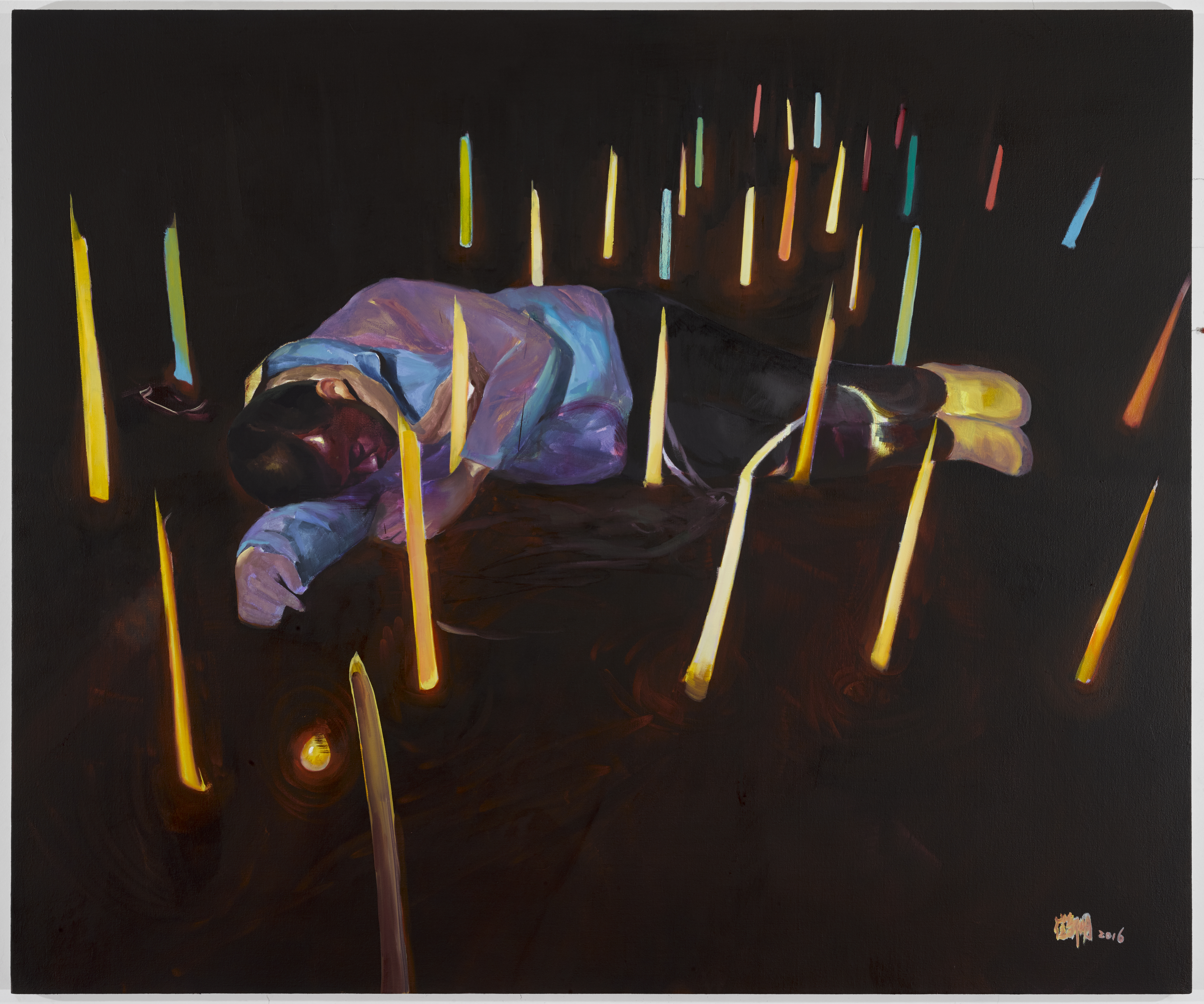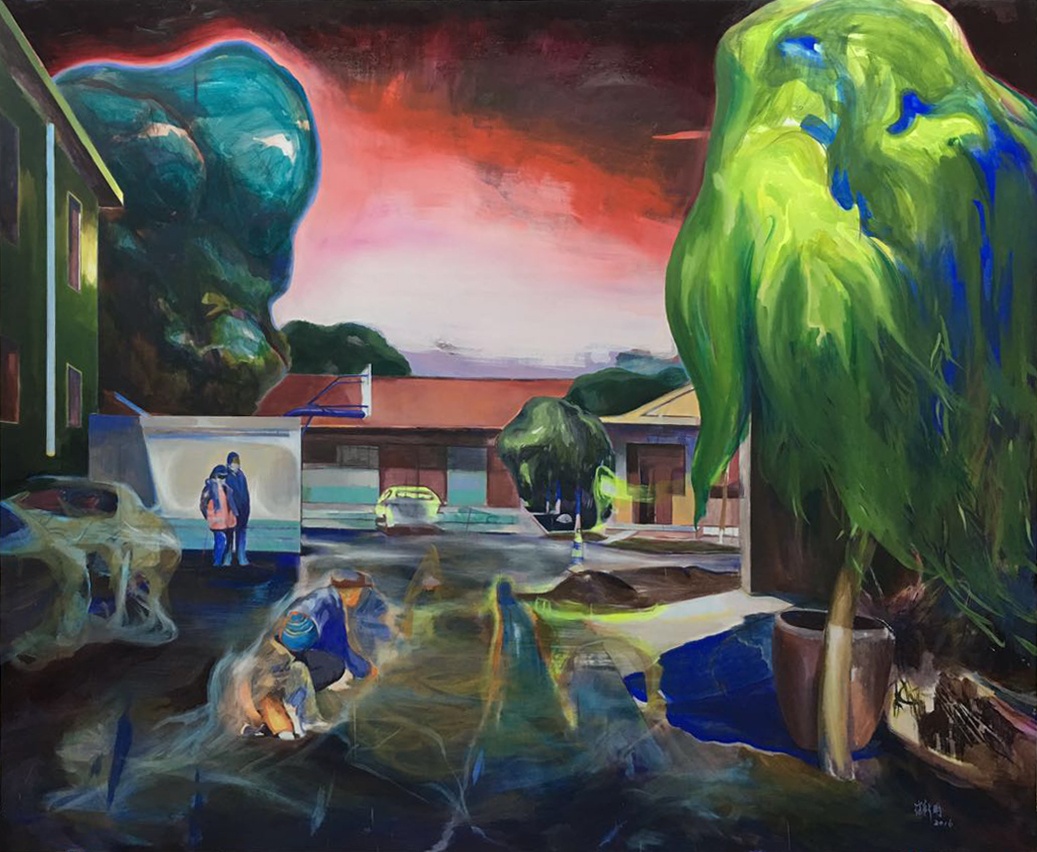Edouard Malingue Gallery is thrilled to announce the opening of its space in Shanghai, designed by BEAU Architects. Located in the West Bund, the 270 sqm space is set in a new art hub where two private museums, art galleries, collector spaces and the West Bund Art & Design fair are situated. As described by Edouard and Lorraine Malingue “the opening of the second gallery space reflects our commitment to the art scene in China and follows our vision to create a wider exhibition platform for our artists and an enriching experience for viewers.” Edouard Malingue Gallery, Shanghai will build on the gallery’s existing programme that emphasises dynamic solo exhibitions and curatorial projects with emerging and established Asian and international contemporary artists.
Inaugurating the space will be the solo show ‘Festival’ with emerging Chongqing-based artist Cui Xinming (b. 1986). A recent graduate from the Sichuan Academy of Fine Arts, Cui is a rising Chinese artist who creates expansive oil on canvas works that express, in an elaborate and vivid painterly style, the tumultuous thoughts and reflections of a younger Chinese generation that is living through a period of constant change. From Cui’s early series ‘Black Hole of Memories’ to his most recent bodies of work ‘A Sleepwalker’s World’ and ‘Journey to the East’, Cui continually addresses, in an evolving painterly style, how his peers and compatriots are casting into oblivion the past along with its rich memories in an attempt to relentlessly attain a new stage of modernity.
Featuring an entirely new series of works, ‘Festival’ presents the artist’s apprehension of the self and his perception of a shifting reality over the past two years. Taking inspiration from the four distinct seasons of Northern China, and the memories Cui harbours of his hometown, the paintings point to the forgotten corners of China’s second and third tier cities. Through the use of vivid imagery and bright tonal varieties, Cui reflects on how these towns, ever more prevalent, have been hesitantly turned into bizarre, near surreal scenes by the repercussions of an era, embedded in development. Stemming from Cui’s position as a now distant onlooker, the viewer becomes privy to his personal perspective regarding his hometown, fleshing out at once a state of recollection as well as one of discontinuity.
Old friends, ceremonies and celebrations set against empty, desolate backgrounds; human life, or the shifting nature of, highlighted through the emphasised dimensions of plants and domestic settings; the pervasive use of fluorescent green throughout the paintings, heightening the festival atmosphere; an implied vigilance regards the notions of momentary glory and success. These are but snippets of the visual cues pervading Cui’s recent works: assuming the role of film director, Cui writes scripts, draws rough sketches and undergoes a regular selection of ‘actors’. Replete with coincidence, his works detach elements from their traditional meanings, seeking to unravel the fringe where reality and imagination coincide. “Capturing moments at a specific point in time to reflect the real world” – this is Cui’s expressive platform or channel of exchange with the outside world.
Such dialogue between the instant and the actual provides Cui with a focus that he continually develops. The chief protagonists are working class, yet, he rarely depicts their facial features, opting rather for general anonymity. Indeed, the subjects of his paintings often have their backs turned or faces blurred, leaving solely their dress and movements as sources of reveal regards their background and identity. For example, the people depicted in ‘Glory – 201512’ are based on a photograph, in which Cui accidentally captured a cluster of motorcycle-taxi drivers. Since, as individuals or as a group, these figures reappear throughout his work, continual actors
in his evolving visual play. Cui’s obsession with fable-style narratives may be traced back to his hometown of Qingzhou, where ancestral folk tales placed background roles in centre stage. Lacing an ambiguous mix of animals, gods and everyday objects into each story, it is possible that these influenced Cui’s notion of the ‘real’.
By comparison to his previous works in ‘A Sleepwalker’s World’ (2013) and ‘Journey to the East’ (2014), the recent paintings in ‘Festival’ appear to behold a sense of restraint. A complex storyline continues to pervade them but there is an increased emphasis on delicate strokes. By building layers of paint and subsequently scraping them away, Cui is able to transform an expansive monochromatic waterfall into a cluster of rosy clouds, for example. Additionally, whilst Cui’s works continue to include religious elements – his manner of emphasising mankind’s sense of helplessness via entrusting hope in Gods – the scenes of shrines and sacrifice, which were easily recognisable in his earlier paintings, are now hidden amidst the details. They have rather become symbols, such as the bishop’s red hat in ‘Glory – 201602’ or the characters’ clothing in ‘Untitled (Watering the Tree)’. The overall painting process, however, has still been overall shortened, with traces being left of each layer rather than complete coverage, an effect that gives each painting a feeling of slow movement and real time.
Ultimately, Cui unwaveringly depicts notions of recollections and stories from Northern China. His works are tools for self expression and reflection in times of confusion and conflict, carrying with them an inherent sense of weight and consciousness. The real world in which we live is so distant and absurd that it feels akin to facing a ‘living fossil’. Dramatic and allegorical, Cui’s works are inadvertently extensions of social observations and analysis – forms of verification regards the absurdity of existence. As surmised by Cui: “I hope to present an independent, parallel and alternative world, which allows you to imagine rather than recollect a painting.”
Festival Cui Xinming











2016
Acrylic on canvas
200 x 150 cm

2016
Acrylic and oil on canvas
180 x 150 cm

2016
Oil on canvas
150 x 180 cm

2016
Acrylic and oil on canvas
210 x 252 cm